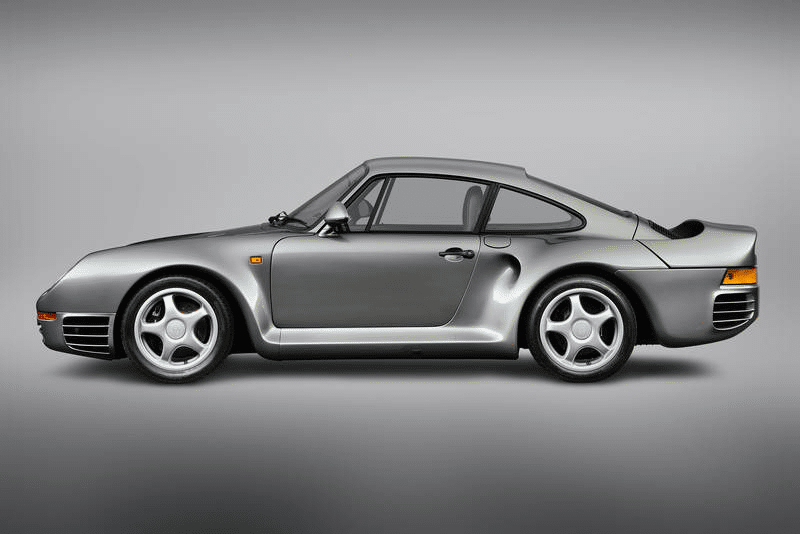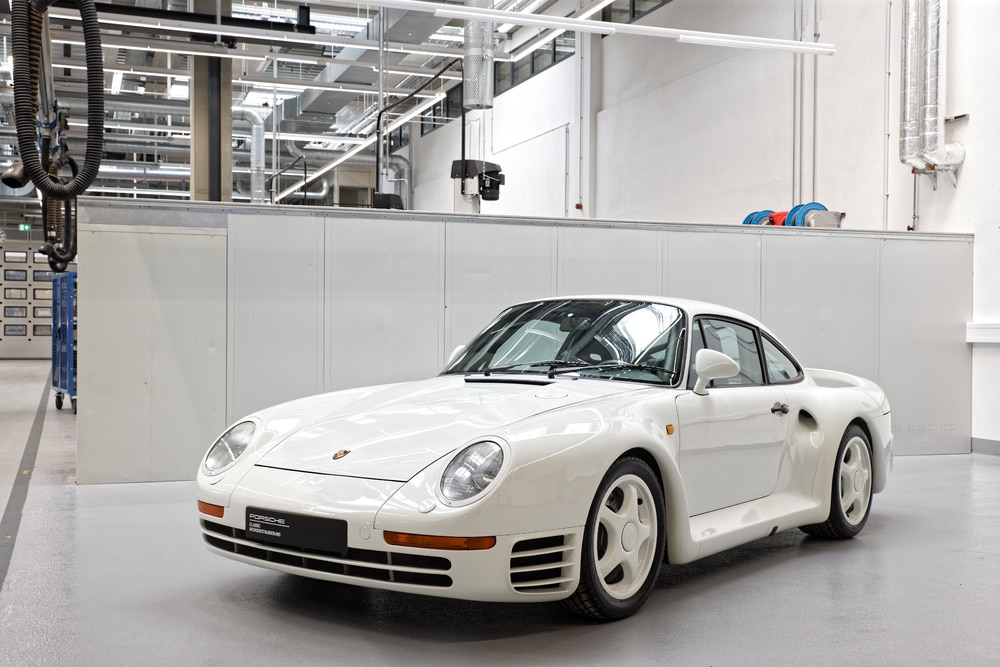Porsche 959: A Technological Masterpiece of Its Time
The Porsche 959, introduced in 1986, stands as one of the most iconic and innovative cars ever produced by the legendary German automaker. Designed as a Group B rally car, it was a technological tour de force that not only revolutionized Porsche’s engineering capabilities but also set the benchmark for supercars of the era. Here, we explore the history, design, performance, and legacy of the Porsche 959.

A Brief History of the Porsche 959
The Porsche 959 was born out of Porsche’s ambition to dominate the motorsport world, specifically the Group B rally circuit. Its development began in 1981, with the goal of creating a car that combined cutting-edge technology with exceptional performance. Though Group B racing was discontinued in 1986, the 959 emerged as a road-going supercar that captured the imagination of car enthusiasts worldwide.
Limited to just 292 road-going examples, the Porsche 959 became an instant collector’s item. With a price tag that reflected its advanced technology and exclusivity, it was, at the time, the most expensive production car in the world.

Design and Engineering
911 platform, it featured a lightweight body constructed from a combination of aluminum and Kevlar-reinforced plastic. The aerodynamically optimized design included active spoilers and underbody panels that reduced drag while enhancing downforce.
One of its standout features was its advanced all-wheel-drive system, a first for Porsche. The system, known as PSK (Porsche-Steuer Kupplung), dynamically adjusted torque distribution between the front and rear wheels, offering unparalleled traction and handling in various driving conditions. This innovation would later influence the development of the AWD system in the Porsche 911 Carrera 4.
Performance
At the heart of the Porsche 959 was a twin-turbocharged 2.85-liter flat-six engine producing 444 horsepower and 500 Nm of torque. Paired with a six-speed manual transmission, the car could accelerate from 0 to 60 mph in just 3.6 seconds and achieve a top speed of 197 mph, making it the fastest production car of its time.
The 959 also featured advanced suspension technology, including height-adjustable shock absorbers and electronically controlled damping, ensuring exceptional comfort and stability at high speeds.
959 Technological Innovations
The Porsche 959 was a pioneer in automotive technology. Key innovations included:
- Sequential Twin-Turbocharging: The engine used two turbochargers operating sequentially for smooth power delivery and reduced turbo lag.
- Advanced Aerodynamics: Its streamlined body and adjustable rear wing optimized airflow and reduced drag.
- Tire Pressure Monitoring System (TPMS): A groundbreaking feature for its time, ensuring optimal tire performance.
- Lightweight Materials: Extensive use of Kevlar, aluminum, and magnesium reduced weight while maintaining structural integrity.
Porsche 959 Legacy and Influence
The Porsche 959’s influence on modern supercars cannot be overstated. Many of the technologies it pioneered, such as all-wheel drive, lightweight composites, and turbocharging, have become standard in high-performance vehicles today. The car also paved the way for subsequent Porsche halo models, including the Carrera GT and 918 Spyder.
Its rarity and historical significance make the 959 one of the most sought-after collector cars in the world. Enthusiasts and collectors prize it not only for its performance but also for its role as a symbol of Porsche’s relentless pursuit of engineering excellence.
Porsche 959 Overall Conclusion
The Porsche 959 remains a masterpiece of automotive engineering and design. Its combination of groundbreaking technology, exhilarating performance, and timeless aesthetics ensures its place as one of the most revered cars in automotive history. For enthusiasts and collectors, the 959 represents the pinnacle of Porsche’s innovation and ambition during a transformative era for the brand.
If you’re a fan of iconic cars, the Porsche 959 is undoubtedly a model worth celebrating. Its legacy continues to inspire, reminding us of a time when Porsche pushed the boundaries of what was possible in automotive design.
